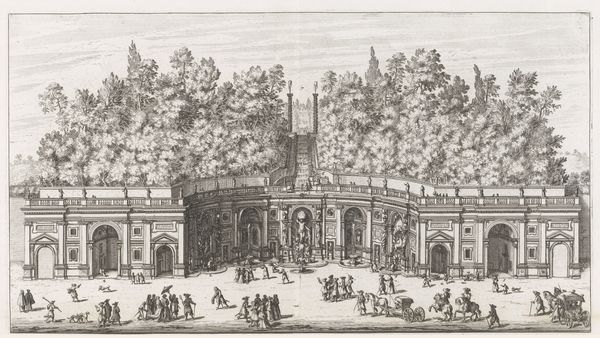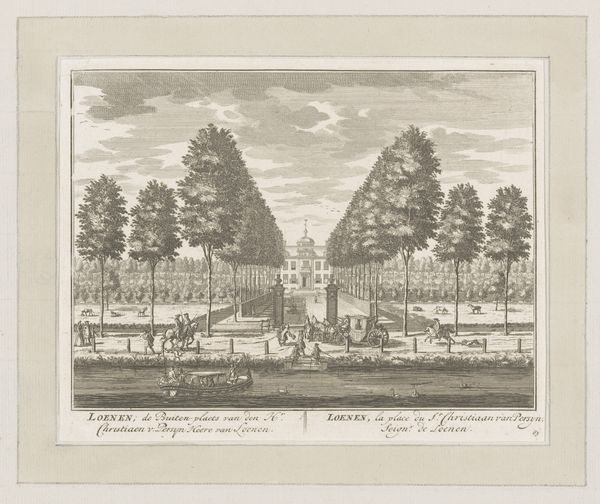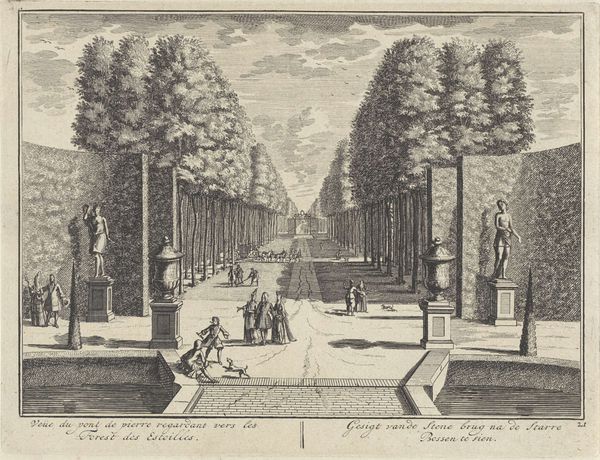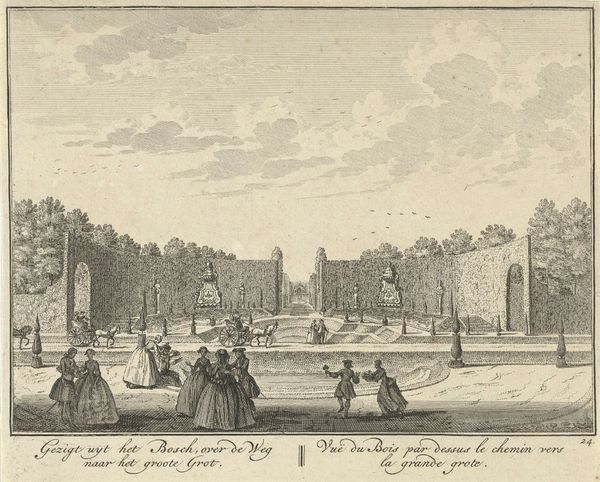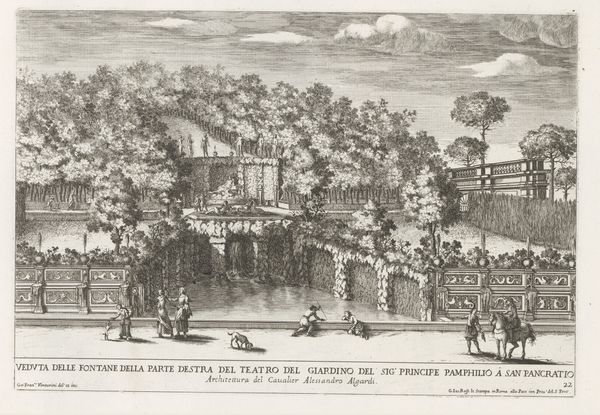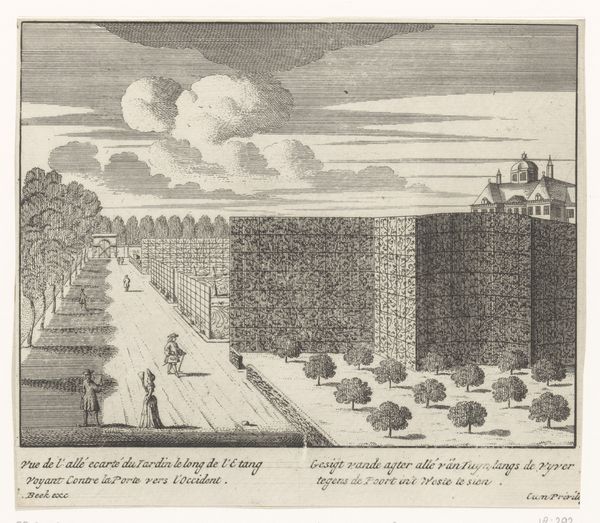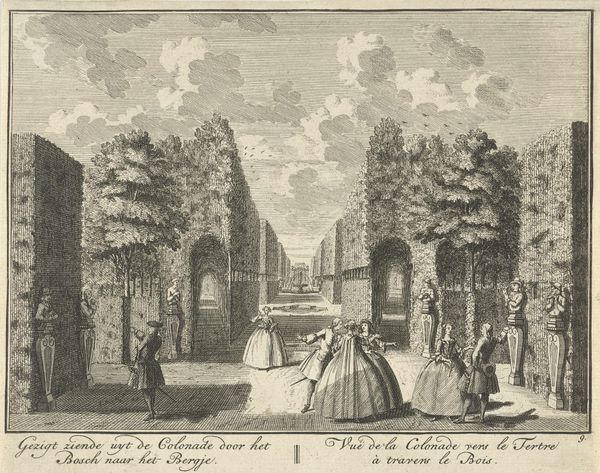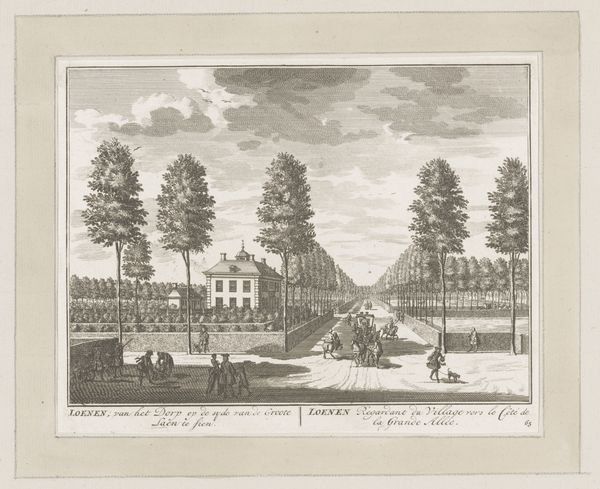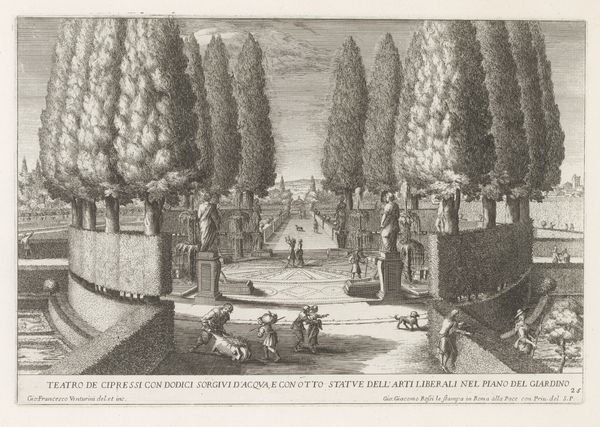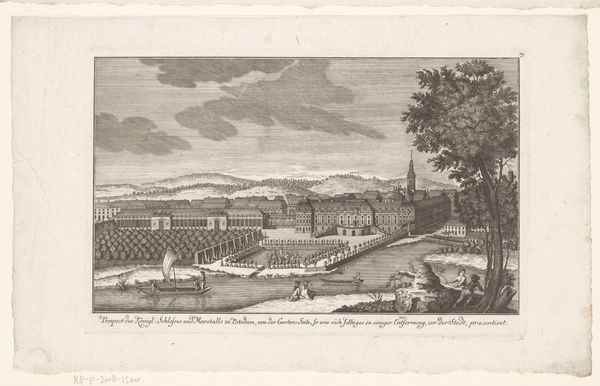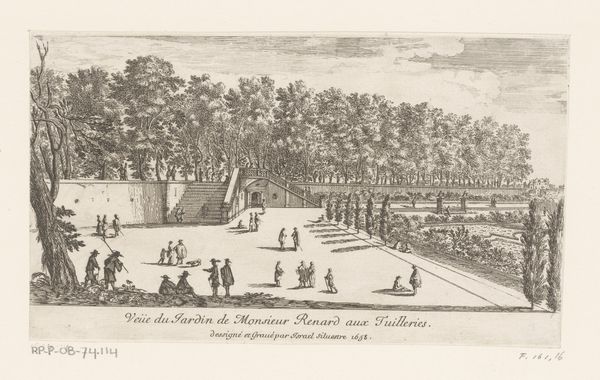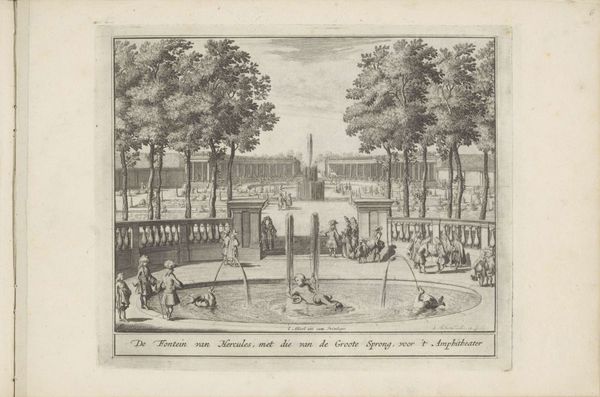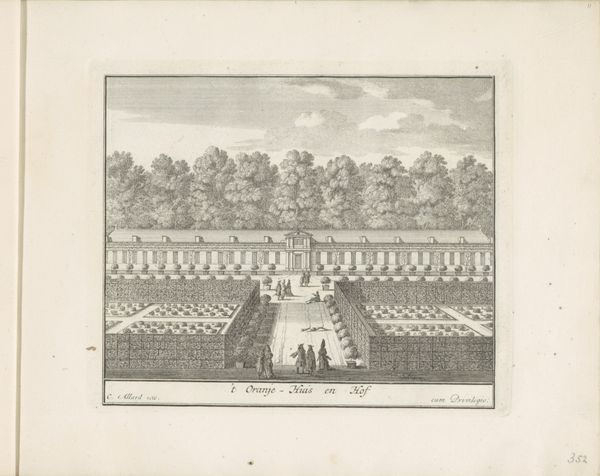
print, engraving, architecture
#
baroque
# print
#
old engraving style
#
landscape
#
cityscape
#
engraving
#
architecture
Dimensions: height 212 mm, width 300 mm
Copyright: Rijks Museum: Open Domain
Curator: Let's consider this engraving, "Fontein in de Villa Borghese te Rome," created between 1653 and 1691 by Giovanni Francesco Venturini. What's your immediate reaction? Editor: The symmetry is almost oppressive. A ring of verdant, almost claustrophobic trees. Statues like watchful sentinels… It evokes a feeling of controlled nature, very artificial. Curator: And indeed! Look at how the material itself communicates status. Marble is employed not just for the fountain’s basins but echoed in balustrades and sculpture plinths, declaring wealth. Observe, too, how the printing process—engraving—mirrors that careful ordering: incised lines forming the rigid patterns. This was labor, meticulously planned, painstakingly executed to visualize power and wealth. Editor: That water motif, ever-flowing water presented as controlled excess, a clear emblem of power. Think of fountains through history, not just as ornament, but as declarations: access, plenty, prosperity carefully staged in the landscape as theater. And notice those figures – how small they are placed next to this scene. It’s to reinforce a symbolic narrative. Curator: Good eye! And in its original context as a print, consider how that multiplied the statement. Ownership wasn't limited to physically experiencing the Borghese gardens, but it permeated society via reproduced images available to various consumers. A controlled method of showing, influencing perceptions, and normalizing social strata through widespread visual consumption. Editor: Precisely! That fountain almost becomes a kind of repeated ideogram for Roman opulence. Even the cloud formation above becomes artfully integrated, it emphasizes an aspirational scene imbued with dynastic overtones. Curator: The labor required to create that image—and the layers of cultural messaging it conveys about production, access, and status...it all informs my appreciation of the work. Editor: For me, seeing that delicate etching, I'm struck by how lasting symbols affect emotions – power, beauty, control. It persists beyond Venturini's time and remains potent to this day.
Comments
No comments
Be the first to comment and join the conversation on the ultimate creative platform.
